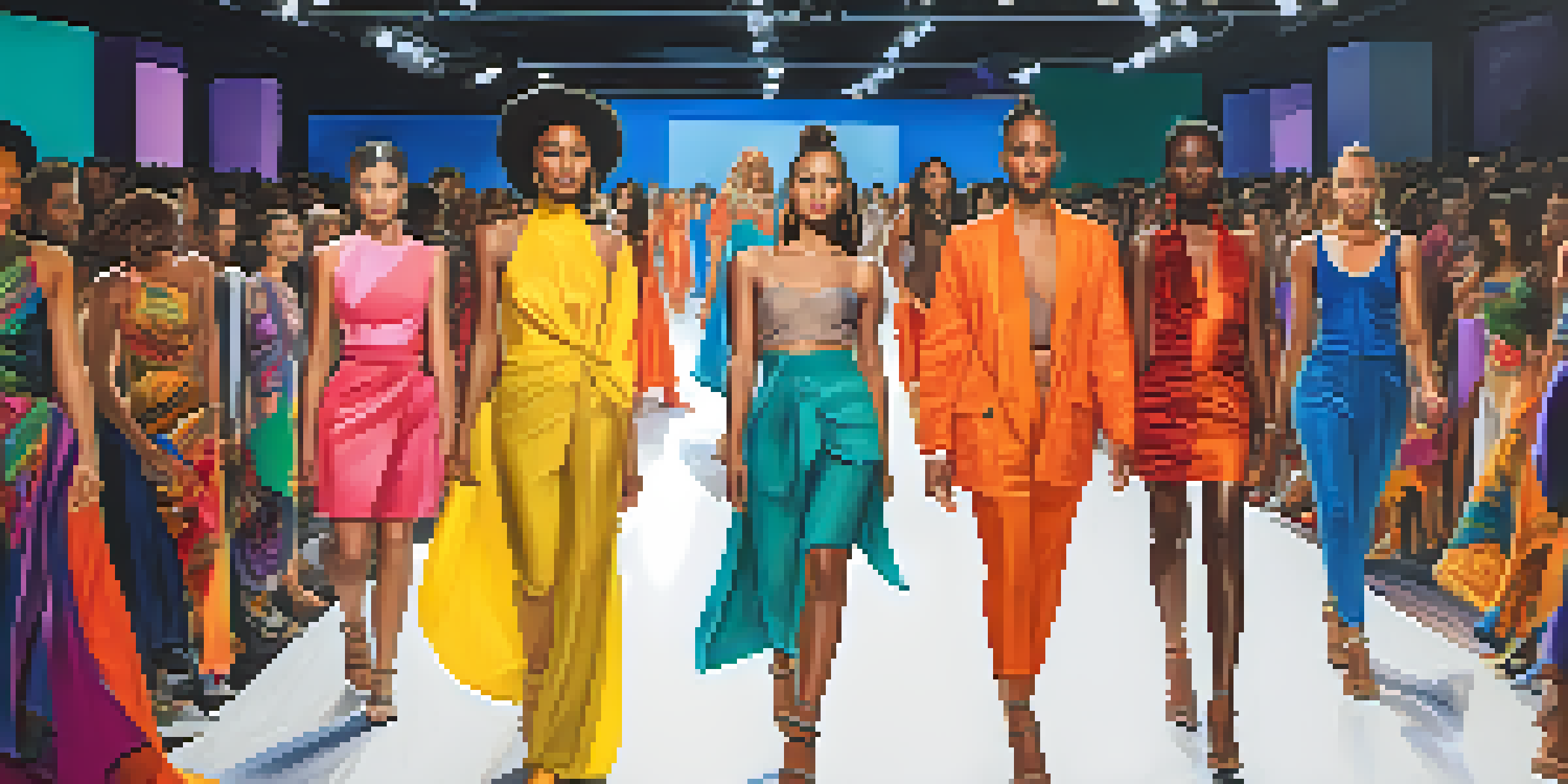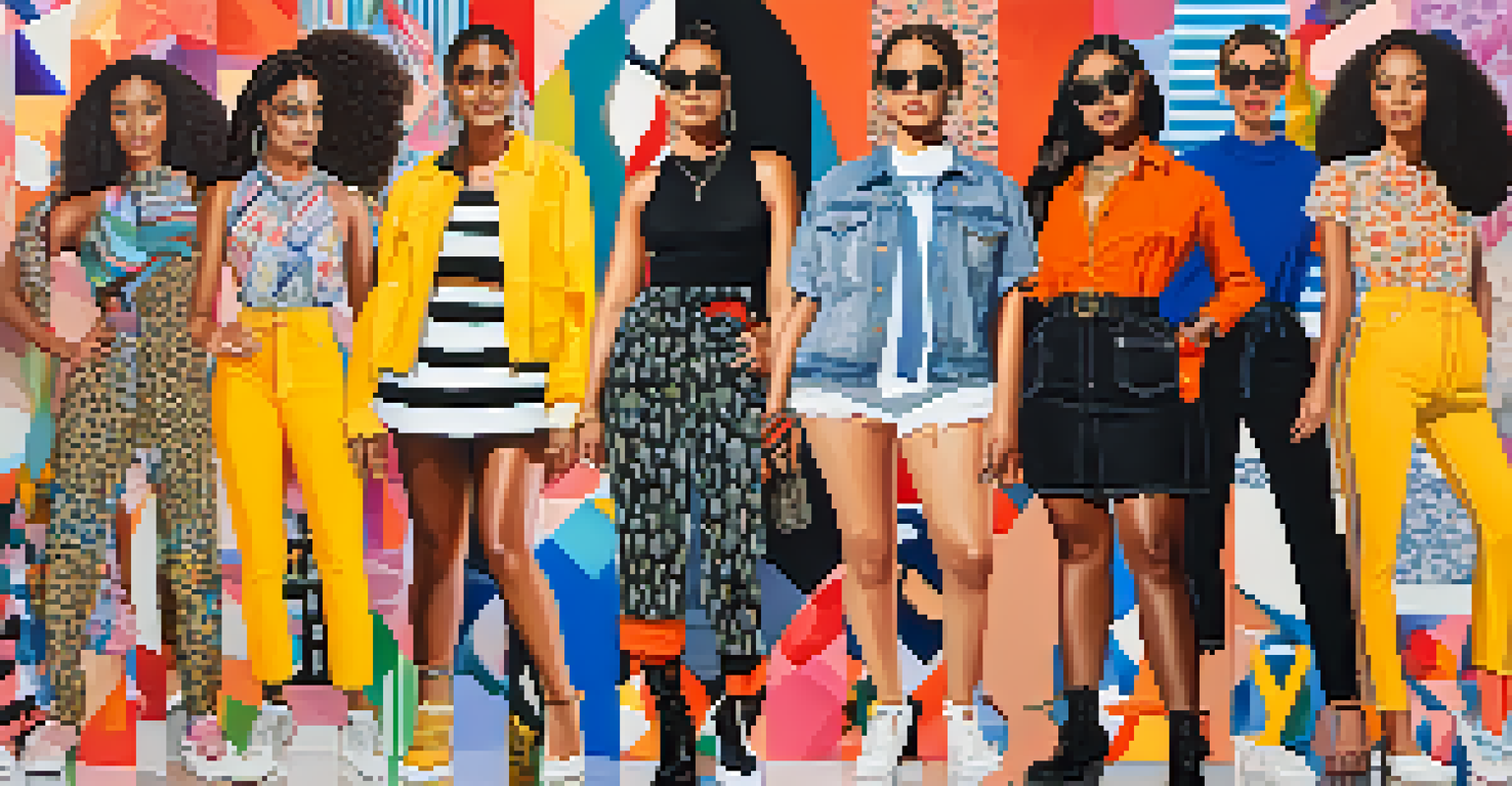Diversity in Fashion: A Path to Gender Equality

Understanding Diversity in the Fashion Industry
Diversity in fashion refers to the representation of various genders, ethnicities, and body types within the industry. It is about showcasing a broader spectrum of identities that reflect society's complexity. As fashion plays a significant role in culture and self-expression, embracing diversity can lead to a more inclusive environment for all.
Fashion is about dreaming and making other people dream. It should reflect the diversity of the world we live in.
The need for diversity stems from the traditional norms that have historically dominated the fashion landscape. For decades, the industry has often prioritized a narrow definition of beauty, which has marginalized many groups. By shifting the focus to a more varied representation, brands can resonate with a wider audience and promote acceptance.
Ultimately, embracing diversity is not just a trend—it's a necessity. The call for inclusive representation is growing louder, and those who ignore it risk losing relevance. As we explore this topic, we can see how diversity in fashion serves as a vital step towards achieving gender equality.
The Impact of Gender Representation in Fashion
Gender representation in fashion is crucial, as it shapes societal perceptions of gender roles and expectations. When women are featured prominently in campaigns and runway shows, it challenges the stereotypes that often confine them. This visibility can empower women to break free from traditional molds and embrace their individuality.

Moreover, male representation is equally essential. By showcasing men in various roles—be it as models, designers, or leaders—fashion can redefine masculinity and encourage men to express their emotions and styles without constraints. This shift not only promotes gender equality but also enriches the creative landscape.
Diversity is Essential in Fashion
Embracing a broader representation of genders, ethnicities, and body types is crucial for creating an inclusive fashion industry.
In essence, a balanced representation of genders in fashion is vital for creating a world where everyone can thrive. When individuals see themselves reflected in the media, it fosters a sense of belonging and encourages self-acceptance, paving the way for a more equal society.
Fashion Brands Leading the Charge for Inclusivity
Several fashion brands have taken significant steps towards promoting inclusivity and diversity. For instance, Aerie, a lingerie brand, has become renowned for its body-positive campaigns featuring models of various sizes and backgrounds. Their commitment to authenticity resonates with consumers, proving that inclusivity can drive brand loyalty.
Inclusivity is not a trend; it is a necessity for the fashion industry to thrive and reflect the world around us.
Another example is Savage X Fenty, which revolutionized the lingerie industry by showcasing models of all shapes and skin tones. Founded by Rihanna, the brand emphasizes that beauty comes in all forms and encourages women to embrace their bodies. This approach not only challenges industry standards but also inspires consumers to celebrate their uniqueness.
These brands demonstrate that prioritizing diversity is not only ethically sound but also beneficial for business. By appealing to a broader audience, they can foster deeper connections with consumers and contribute to a more equitable fashion landscape.
The Role of Social Media in Promoting Diversity
Social media has become a powerful platform for advocating diversity in fashion. With the rise of influencers and micro-influencers, diverse voices can now reach global audiences, challenging traditional beauty standards. Platforms like Instagram and TikTok allow individuals to share their stories and perspectives, which can inspire change in the industry.
Many brands now collaborate with influencers who represent different identities, ensuring that their marketing strategies resonate with diverse demographics. This shift not only promotes inclusivity but also allows for more authentic storytelling. Consumers are increasingly drawn to brands that reflect their values and support diversity.
Gender Representation Matters
Balanced visibility of all genders in fashion campaigns can challenge stereotypes and promote self-acceptance.
As social media continues to evolve, its ability to highlight diverse voices will only grow stronger. This democratization of representation is essential for driving change in the fashion industry and can lead to a more equitable future for all.
Challenges Facing Diversity in Fashion
Despite the progress made in promoting diversity, challenges still persist within the fashion industry. One significant hurdle is the prevalence of systemic bias, which can hinder the opportunities available to underrepresented groups. This bias often manifests in hiring practices, casting decisions, and the overall narrative portrayed by brands.
Moreover, there is a tendency for some brands to adopt diversity as a marketing strategy rather than a genuine commitment. This can lead to 'performative' activism, where brands highlight diversity without implementing meaningful change within their structures. Consumers are becoming more aware of these tactics, demanding authenticity and accountability.
Addressing these challenges requires a concerted effort from industry leaders, brands, and consumers alike. By fostering an environment of true inclusivity and holding brands accountable, we can pave the way for lasting change in the fashion world.
The Importance of Intersectionality in Fashion
Intersectionality is a term that highlights how various social identities—such as race, gender, and class—interact and create unique experiences of discrimination or privilege. In the context of fashion, recognizing intersectionality is vital to understanding the diverse needs and perspectives of individuals. Fashion should not only celebrate diversity but also acknowledge the complexities that come with it.
For instance, a plus-size model of color may face different challenges than a straight-sized white model. By taking intersectionality into account, brands can create campaigns and collections that resonate with a broader audience. This approach fosters a deeper understanding of the various experiences within the fashion community.
Social Media Fuels Change
Platforms like Instagram and TikTok empower diverse voices, pushing brands to adopt authentic and inclusive marketing strategies.
Ultimately, embracing intersectionality can lead to more authentic representation in fashion. By acknowledging and addressing these complexities, the industry can create a more inclusive environment that uplifts all voices.
Looking Ahead: The Future of Diversity in Fashion
The future of diversity in fashion looks promising, with a growing movement towards inclusivity and representation. As consumers increasingly demand authenticity, brands are starting to prioritize diverse voices in their campaigns and collections. This shift signals a transformation in the industry that could lead to a more equitable landscape.
Innovations in technology, such as virtual fitting rooms and augmented reality, also offer new ways to promote diversity. These advancements can help showcase a wider range of body types and styles, allowing consumers to see themselves represented in various contexts. The future may very well be a space where everyone feels included and represented.

As we move forward, it will be essential for all stakeholders—designers, brands, and consumers—to continue advocating for diversity. By working together, we can create a fashion industry that not only represents but also celebrates the richness of human experience.